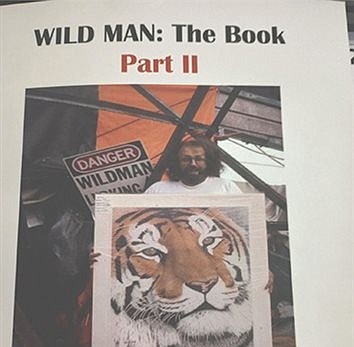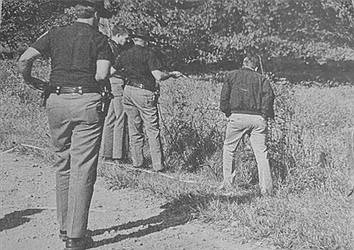Talking ‘bout a heatwave
August 24, 2023 at 12:05 a.m.

It’s another hot one in Union County, and we’re not alone. Nearly 150 million Midwesterners have been under heat alerts since Tuesday and through the midweek as we experience our most significant heat wave in years, while the South continues to endure scorching temperatures. Excessive heat warnings are in effect for parts of 16 states from Minnesota to Louisiana, including cities such as Minneapolis, Omaha, Wichita, Oklahoma City, Dallas, Little Rock, St. Louis, and Chicago. The Weather Service in St. Louis has cautioned that the risk of heat-related illness will increase, especially for vulnerable populations. Numerous record highs and warm lows are anticipated, with the heat wave expected to persist through the weekend.
We’ve seen this before. July 1936 was an equally hot month throughout much of the United States. The hottest temperature on record in Indiana was 116 °F, recorded at Collegeville on July 14, 1936. Specifically, the temperature was recorded at the Collegeville St. Joseph County Airport. Experts continue to advise taking the heat seriously and avoiding prolonged outdoor exposure. Unfortunately, it’s been both the heat AND the humidity to blame. The Weather Channel says that the reason for this expanding heat wave is something called a "heat dome". That's a bubble of high pressure and warm air that suppresses clouds and rain and diverts the storm track well to the north. When those happen in the heart of summer, they can lead to extended heat waves near their core.
All time record highs were already tied or set in these locations:
-Alexandria, Louisiana (110 degrees Saturday; previous record was 109 on Sept. 1, 2000)
-New Iberia, Louisiana (104 degrees Saturday; tied previous record set on July 31, 2023)
-College Station, Texas (112 degrees Sunday; tied previous record from Sept. 4, 2000)
-Lufkin, Texas (110 degrees Sunday; tied previous record from Sept. 4, 2000 and Aug. 19, 1909)
August records were set at Houston's Hobby Airport (107 degrees) and Lafayette, Louisiana (105 degrees).
Manhattan, Kansas, reached a sweltering 115 degrees Saturday, just 1 degree shy of their all time Dust Bowl record. It was also the nation's hottest location Saturday, a rarity in summer anywhere other than Texas or the Desert Southwest, according to weather historian Christopher Burt.
Heat index values have gone off the charts across the country. Miami, Oklahoma, reached a heat index of 126.7 degrees on Monday, setting an all-time heat index record for the state.
Sioux City, Iowa, set a new record for their hottest heat index on Monday of 122 degrees.
Falls City, Nebraska, recorded a heat index of 128 degrees on Saturday, their highest in 42 years of records, according to the National Weather Service. Lawrence, Kansas, recorded a heat index of 134 degrees Sunday - thanks not only to triple-digit heat, but also a dew point of 84 degrees. The National Weather Service defines the heat index, also known as the apparent temperature, as what the temperature feels like to the human body when relative humidity is combined with the air temperature. When the body gets too hot, it begins to perspire or sweat to cool itself off. If the perspiration is not able to evaporate, the body cannot regulate its temperature. When the atmospheric moisture content (i.e. relative humidity) is high, the rate of evaporation from the body decreases. In other words, the human body feels warmer in humid conditions.
When it gets this hot, keep an eye on your people and pets. Centers for Disease Control reminds us of these basic points to stay safe in extreme temps:
Stay in an air-conditioned indoor location as much as you can.
Drink plenty of fluids even if you don’t feel thirsty.
Schedule outdoor activities carefully.
Wear lightweight, loose-fitting clothing and sunscreen.
Pace yourself.
Take cool showers or baths to cool down.
Check on friends and neighbors and have someone check on you.
Never leave children or pets in cars.
Check the local news for health and safety updates.
Latest News
E-Editions
Events
It’s another hot one in Union County, and we’re not alone. Nearly 150 million Midwesterners have been under heat alerts since Tuesday and through the midweek as we experience our most significant heat wave in years, while the South continues to endure scorching temperatures. Excessive heat warnings are in effect for parts of 16 states from Minnesota to Louisiana, including cities such as Minneapolis, Omaha, Wichita, Oklahoma City, Dallas, Little Rock, St. Louis, and Chicago. The Weather Service in St. Louis has cautioned that the risk of heat-related illness will increase, especially for vulnerable populations. Numerous record highs and warm lows are anticipated, with the heat wave expected to persist through the weekend.
We’ve seen this before. July 1936 was an equally hot month throughout much of the United States. The hottest temperature on record in Indiana was 116 °F, recorded at Collegeville on July 14, 1936. Specifically, the temperature was recorded at the Collegeville St. Joseph County Airport. Experts continue to advise taking the heat seriously and avoiding prolonged outdoor exposure. Unfortunately, it’s been both the heat AND the humidity to blame. The Weather Channel says that the reason for this expanding heat wave is something called a "heat dome". That's a bubble of high pressure and warm air that suppresses clouds and rain and diverts the storm track well to the north. When those happen in the heart of summer, they can lead to extended heat waves near their core.
All time record highs were already tied or set in these locations:
-Alexandria, Louisiana (110 degrees Saturday; previous record was 109 on Sept. 1, 2000)
-New Iberia, Louisiana (104 degrees Saturday; tied previous record set on July 31, 2023)
-College Station, Texas (112 degrees Sunday; tied previous record from Sept. 4, 2000)
-Lufkin, Texas (110 degrees Sunday; tied previous record from Sept. 4, 2000 and Aug. 19, 1909)
August records were set at Houston's Hobby Airport (107 degrees) and Lafayette, Louisiana (105 degrees).
Manhattan, Kansas, reached a sweltering 115 degrees Saturday, just 1 degree shy of their all time Dust Bowl record. It was also the nation's hottest location Saturday, a rarity in summer anywhere other than Texas or the Desert Southwest, according to weather historian Christopher Burt.
Heat index values have gone off the charts across the country. Miami, Oklahoma, reached a heat index of 126.7 degrees on Monday, setting an all-time heat index record for the state.
Sioux City, Iowa, set a new record for their hottest heat index on Monday of 122 degrees.
Falls City, Nebraska, recorded a heat index of 128 degrees on Saturday, their highest in 42 years of records, according to the National Weather Service. Lawrence, Kansas, recorded a heat index of 134 degrees Sunday - thanks not only to triple-digit heat, but also a dew point of 84 degrees. The National Weather Service defines the heat index, also known as the apparent temperature, as what the temperature feels like to the human body when relative humidity is combined with the air temperature. When the body gets too hot, it begins to perspire or sweat to cool itself off. If the perspiration is not able to evaporate, the body cannot regulate its temperature. When the atmospheric moisture content (i.e. relative humidity) is high, the rate of evaporation from the body decreases. In other words, the human body feels warmer in humid conditions.
When it gets this hot, keep an eye on your people and pets. Centers for Disease Control reminds us of these basic points to stay safe in extreme temps:
Stay in an air-conditioned indoor location as much as you can.
Drink plenty of fluids even if you don’t feel thirsty.
Schedule outdoor activities carefully.
Wear lightweight, loose-fitting clothing and sunscreen.
Pace yourself.
Take cool showers or baths to cool down.
Check on friends and neighbors and have someone check on you.
Never leave children or pets in cars.
Check the local news for health and safety updates.





